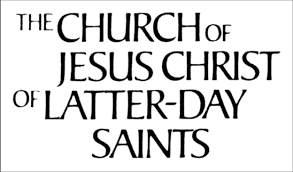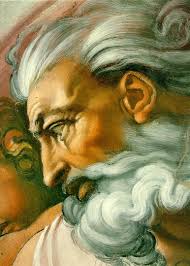
The Church of Jesus Christ of Latter-day Saints
The Church of Jesus Christ of Latter-day Saints, Commonly and incorrectly known as the "Mormon Church" was established, latter day saints believe, by God through the Prophet Joseph Smith in 1830. Smith claimed he was visited by God the Father and Jesus Christ while praying in the forest near his home in Palmyra, New York. Jesus Christ, according to Smith, told him that no Church on the Earth was correct and not to join any of them. Since that day, the Church of Jesus Christ of Latter-day Saints has become one of the fastest growing religions and has just over 13 million followers.

Latter-day Saints are few and far between in many US states but in Utah they account for almost 70% of the population. Latter-day Saints are unique to Christianity in that they use temples for "ordinances". The Church started by Smith in 1830 split into many sects but the main three are the Church of Jesus Christ of Latter-day Saints (Mormons), The Community of Christ formerly the Reorganised Church of Jesus Christ and the Fundamentalist Church of Jesus Christ of Latter-day Saints. The Later of those is most famous for being a polygamous sect and is commonly and incorrectly confused with the Church of Jesus Christ of Latter-day Saints in the media.
The following is a list of nine questions commonly asked by people out side of the Church of Jesus Christ of Latter-day Saints answered by a Irish Latter-day Saint scholar, currently working towards a masters degree in theology from Maynooth:
Q: Who was Joseph Smith?

Joseph Smith (1805-1844) was the founding prophet of The Church of Jesus Christ of Latter-day Saints. Latter-day Saints believe that, through the Prophet Joseph Smith, the Lord restored Christ's Church, translated the Book of Mormon and the Book of Abraham, and was the recipient of many revelations.
The best biography of Joseph Smith, warts-and-all, is that of Joseph Smith: Rough Stone Rolling from 2005 by Richard Lyman Bushman.
Q: Why do we need the Book of Mormon?
The Book of Mormon is another witness of the divinity and sonship of Jesus Christ, as well as His atonement that propitiates the Father's wrath and opens the way of salvation to us (cf. 1 Jn 2:1-2). There is nothing in the Bible, contra Protestants, that states that the Bible is the only revealed text from the Lord or that there would be no more revelation after the New Testament.
The Book of Mormon is the keystone of the Latter-day Saint faith--if false, Joseph Smith was a false prophet, and the Church has no claim to authority. Notwithstanding, if true, Joseph Smith was a divinely called prophet of God and the Church of Jesus Christ is, as the Lord revealed to the Prophet, the Only True and Living Church upon the face of the earth (D&C 1:30).
Q: Didn't Joseph copy the Book of Mormon from View of the Hebrews or the tribes of Israel in America by Ethan Smith and/or A history of the American Indians by James Adair?
Typically, critics who charge Joseph Smith of plagiarising these sources engage in what is called, "parallelomania," a term coined by Sandel in the Spring 1962 issue of the Social of Biblical Literature. Typically, parallels are drawn between these the Book of Mormon and these, and other texts, without any discussion on literary-critical methodology and discussing the significance of these parallels. For instance, some claim that, because the Book of Mormon and The Spalding Manuscipt discuss elephants and food, Joseph was dependent on Solomon Spalding's text! As for Adair, the Tanners and others claim that, because the Book of Mormon and Adair's book discuss fortifications, Joseph was dependent on Adair's text from the 1770s, notwithstanding that fortifications are common in the Ancient Near East and also Mesoamerica, where the Book of Mormon took place, according to the vast majority of Latter-day Saint scholars (e.g., John L. Sorenson, An Ancient American Setting for the Book of Mormon from 1985).
Q: How do you know that the authority to run the Church went to Brigham Young and not one of the many other claimants?
The position of the Twelve Apostles, then headed by Brigham Young, at the time of the martyrdom of the Prophet Joseph Smith and Hyrum Smith, as the senior Quorum of the Church was established in Nauvoo, Illinois. In effect, the Twelve were the Presidents of the Church until a new First Presidency was organised, and Brigham Young, as President of the Twelve, was the President of the Church from the death of Joseph and Hyrum.
Others, such as David Whitmer, Sidney Rigdon, and others, had no real authoritative claim to the Presidency of the Church after the death of Joseph Smith.
Q: What about accusations of Smith being a Gold digger?
Joseph Smith was hired by Josiah Stowell to dig in silver mines. Stowell's sons believed that Joseph was defrauding him, and Joseph was taken to a hearing in March of 1826. The historical records, however, reveal that it was a hearing, not a trial, and that Joseph, from the evidence, was acquitted. Some have claimed that Joseph took "leg-bail" (e.g., Dan Vogel). However, this is refuted by the fact that Joseph Smith, a little over a year later, was married by judge in 1827 to Emma Hale, Joseph's first wife. Further, Josiah Stowell spoke in defence of Joseph Smith.
Gordon Madsen's article, ""Joseph Smith's 1826 Trial: The Legal Setting," BYU Studies 30, no. 2 (1990): 91–108, is the best article on the issue, refuting the claim that Joseph was "convicted" in the 1826 hearing (article in the author's possession).
Q: Why would we need a prophet on the Earth today if we have scriptures?
One of the problems of Sola Scriptura is that, using the Scriptures alone, with our (fallible) reasoning skills, people will come up with equally "plausible" doctrines. For instance, Lutherans teach baptismal regeneration, while Reformed Baptists condemn such as a heresy. Calvinists teach unconditional election, while Arminians teach the opposite. Presbyterians teach infant baptism, while Baptists believe in baptism of believers only. Many other examples could be discussed. While the Scriptures are indeed "inspired," or theopneoustos (Greek of 2 Timothy 3:16), we need established, doctrinal boundaries, and that is appropriated through God's mouthpiece on the earth, the chief Apostle of the Church, being Thomas S. Monson as of writing.
Q: Does the Church believe in the divinity of Jesus?
Yes. The Title Page of the Book of Mormon refers to Christ as "The Eternal God." Uniquely Latter-day Saint scripture continually refers to Jesus as divine and God, and the only way to salvation.
Q: Does the Church believe that God is a physical being?
D&C 130, revealed to the Prophet Joseph Smith, explicitly refers to the Father as an embodied being. While "mainstream" Christianity, per the Hypostatic Union and Chalcedon, state that Jesus is eternally embodied, they usually clam that, based on John 4:24, that the Father is only a spirit.
John 4:24 (pneuma ho theos) is, in Greek, a preverbal predication. In Greek grammar, preverbal predications do not discuss composition or attributes. In LDS theology (e.g., D&C 93), the Father is embodied, composing of a Spirit and a body, so John 4:24 does not preclude LDS teaching on this issue.
Hebrews 1:3 refers to Jesus as the apaugasma (reflection) of the essential nature of the Father, suggesting that, as with Jesus, the Father is embodied. Other texts could be elicited. Indeed, scholars, such as Mark S. Smith, admit that the earliest Israelite conception of God was that of an embodied being.
Q: Is it true that Joseph taught plurality of "the Gods?"
In D&C 132, and Joseph Smith's King Follet Discourse and the Sermon in the Grove, the prophet taught the plurality of the Gods. Such is entirely logical. Consider the following:
There are three divine persons.
Each divine person is God.
If every A is a B, logically, there can not be fewer B's than As
Therefore, there are at least three Gods.
Of course, per the LDS exegesis of John 17, the Father, Son, and Holy Spirit are "one God" in that they are united in an intimate way, in covenantal, in will and purpose, and so forth.
That there are multiple gods are part of the original language texts of the Bible. For instance, the Hebrew of Genesis 20:13 uses plural verb structures and plural persons when discussing the (true) Gods who caused Abraham to wander. It is rendered –
Wyhy k'sr ht'w 'ty 'lhym mbbyt 'by ... (English: "And it came to pass when (the) Gods caused me to wander from my father's house..."). Another way to put it: "And it came to pass when they, (the) Gods, caused me to wander from the house of my father..." Not only is this consistent with LDS theology, but also supports the creation story in the Book of Abraham and Joseph Smith's "controversial" teachings. If it had been the singular 'God', it would have been ht'h 'lhym rather than the plural ht'w 'lhym. Yet, in spite of the Hebrew, no one seems willing to translate this passage literally. Nevertheless, plural gods are mentioned in the Hebrew of the text.
I would like to thank Robert Boylan who answered these questions specifically for this blog. If you have any further questions about the Church of Jesus Christ of Latter-day Saints please feel free to contact him at IrishLDS87@gmail.com.

The following is a list of nine questions commonly asked by people out side of the Church of Jesus Christ of Latter-day Saints answered by a Irish Latter-day Saint scholar, currently working towards a masters degree in theology from Maynooth:
Q: Who was Joseph Smith?

Joseph Smith (1805-1844) was the founding prophet of The Church of Jesus Christ of Latter-day Saints. Latter-day Saints believe that, through the Prophet Joseph Smith, the Lord restored Christ's Church, translated the Book of Mormon and the Book of Abraham, and was the recipient of many revelations.
The best biography of Joseph Smith, warts-and-all, is that of Joseph Smith: Rough Stone Rolling from 2005 by Richard Lyman Bushman.
Q: Why do we need the Book of Mormon?
The Book of Mormon is another witness of the divinity and sonship of Jesus Christ, as well as His atonement that propitiates the Father's wrath and opens the way of salvation to us (cf. 1 Jn 2:1-2). There is nothing in the Bible, contra Protestants, that states that the Bible is the only revealed text from the Lord or that there would be no more revelation after the New Testament.
The Book of Mormon is the keystone of the Latter-day Saint faith--if false, Joseph Smith was a false prophet, and the Church has no claim to authority. Notwithstanding, if true, Joseph Smith was a divinely called prophet of God and the Church of Jesus Christ is, as the Lord revealed to the Prophet, the Only True and Living Church upon the face of the earth (D&C 1:30).
Q: Didn't Joseph copy the Book of Mormon from View of the Hebrews or the tribes of Israel in America by Ethan Smith and/or A history of the American Indians by James Adair?
Typically, critics who charge Joseph Smith of plagiarising these sources engage in what is called, "parallelomania," a term coined by Sandel in the Spring 1962 issue of the Social of Biblical Literature. Typically, parallels are drawn between these the Book of Mormon and these, and other texts, without any discussion on literary-critical methodology and discussing the significance of these parallels. For instance, some claim that, because the Book of Mormon and The Spalding Manuscipt discuss elephants and food, Joseph was dependent on Solomon Spalding's text! As for Adair, the Tanners and others claim that, because the Book of Mormon and Adair's book discuss fortifications, Joseph was dependent on Adair's text from the 1770s, notwithstanding that fortifications are common in the Ancient Near East and also Mesoamerica, where the Book of Mormon took place, according to the vast majority of Latter-day Saint scholars (e.g., John L. Sorenson, An Ancient American Setting for the Book of Mormon from 1985).
Q: How do you know that the authority to run the Church went to Brigham Young and not one of the many other claimants?
The position of the Twelve Apostles, then headed by Brigham Young, at the time of the martyrdom of the Prophet Joseph Smith and Hyrum Smith, as the senior Quorum of the Church was established in Nauvoo, Illinois. In effect, the Twelve were the Presidents of the Church until a new First Presidency was organised, and Brigham Young, as President of the Twelve, was the President of the Church from the death of Joseph and Hyrum.
Others, such as David Whitmer, Sidney Rigdon, and others, had no real authoritative claim to the Presidency of the Church after the death of Joseph Smith.
Q: What about accusations of Smith being a Gold digger?
Joseph Smith was hired by Josiah Stowell to dig in silver mines. Stowell's sons believed that Joseph was defrauding him, and Joseph was taken to a hearing in March of 1826. The historical records, however, reveal that it was a hearing, not a trial, and that Joseph, from the evidence, was acquitted. Some have claimed that Joseph took "leg-bail" (e.g., Dan Vogel). However, this is refuted by the fact that Joseph Smith, a little over a year later, was married by judge in 1827 to Emma Hale, Joseph's first wife. Further, Josiah Stowell spoke in defence of Joseph Smith.
Gordon Madsen's article, ""Joseph Smith's 1826 Trial: The Legal Setting," BYU Studies 30, no. 2 (1990): 91–108, is the best article on the issue, refuting the claim that Joseph was "convicted" in the 1826 hearing (article in the author's possession).
Q: Why would we need a prophet on the Earth today if we have scriptures?
One of the problems of Sola Scriptura is that, using the Scriptures alone, with our (fallible) reasoning skills, people will come up with equally "plausible" doctrines. For instance, Lutherans teach baptismal regeneration, while Reformed Baptists condemn such as a heresy. Calvinists teach unconditional election, while Arminians teach the opposite. Presbyterians teach infant baptism, while Baptists believe in baptism of believers only. Many other examples could be discussed. While the Scriptures are indeed "inspired," or theopneoustos (Greek of 2 Timothy 3:16), we need established, doctrinal boundaries, and that is appropriated through God's mouthpiece on the earth, the chief Apostle of the Church, being Thomas S. Monson as of writing.
Q: Does the Church believe in the divinity of Jesus?
Yes. The Title Page of the Book of Mormon refers to Christ as "The Eternal God." Uniquely Latter-day Saint scripture continually refers to Jesus as divine and God, and the only way to salvation.
Q: Does the Church believe that God is a physical being?
D&C 130, revealed to the Prophet Joseph Smith, explicitly refers to the Father as an embodied being. While "mainstream" Christianity, per the Hypostatic Union and Chalcedon, state that Jesus is eternally embodied, they usually clam that, based on John 4:24, that the Father is only a spirit.
John 4:24 (pneuma ho theos) is, in Greek, a preverbal predication. In Greek grammar, preverbal predications do not discuss composition or attributes. In LDS theology (e.g., D&C 93), the Father is embodied, composing of a Spirit and a body, so John 4:24 does not preclude LDS teaching on this issue.
Hebrews 1:3 refers to Jesus as the apaugasma (reflection) of the essential nature of the Father, suggesting that, as with Jesus, the Father is embodied. Other texts could be elicited. Indeed, scholars, such as Mark S. Smith, admit that the earliest Israelite conception of God was that of an embodied being.
Q: Is it true that Joseph taught plurality of "the Gods?"
In D&C 132, and Joseph Smith's King Follet Discourse and the Sermon in the Grove, the prophet taught the plurality of the Gods. Such is entirely logical. Consider the following:
There are three divine persons.
Each divine person is God.
If every A is a B, logically, there can not be fewer B's than As
Therefore, there are at least three Gods.
Of course, per the LDS exegesis of John 17, the Father, Son, and Holy Spirit are "one God" in that they are united in an intimate way, in covenantal, in will and purpose, and so forth.
That there are multiple gods are part of the original language texts of the Bible. For instance, the Hebrew of Genesis 20:13 uses plural verb structures and plural persons when discussing the (true) Gods who caused Abraham to wander. It is rendered –
Wyhy k'sr ht'w 'ty 'lhym mbbyt 'by ... (English: "And it came to pass when (the) Gods caused me to wander from my father's house..."). Another way to put it: "And it came to pass when they, (the) Gods, caused me to wander from the house of my father..." Not only is this consistent with LDS theology, but also supports the creation story in the Book of Abraham and Joseph Smith's "controversial" teachings. If it had been the singular 'God', it would have been ht'h 'lhym rather than the plural ht'w 'lhym. Yet, in spite of the Hebrew, no one seems willing to translate this passage literally. Nevertheless, plural gods are mentioned in the Hebrew of the text.
I would like to thank Robert Boylan who answered these questions specifically for this blog. If you have any further questions about the Church of Jesus Christ of Latter-day Saints please feel free to contact him at IrishLDS87@gmail.com.



What an awesome, cogent post on the issue. Well done, Liam, for posting up the work of who can only be a genius . . .
ReplyDelete